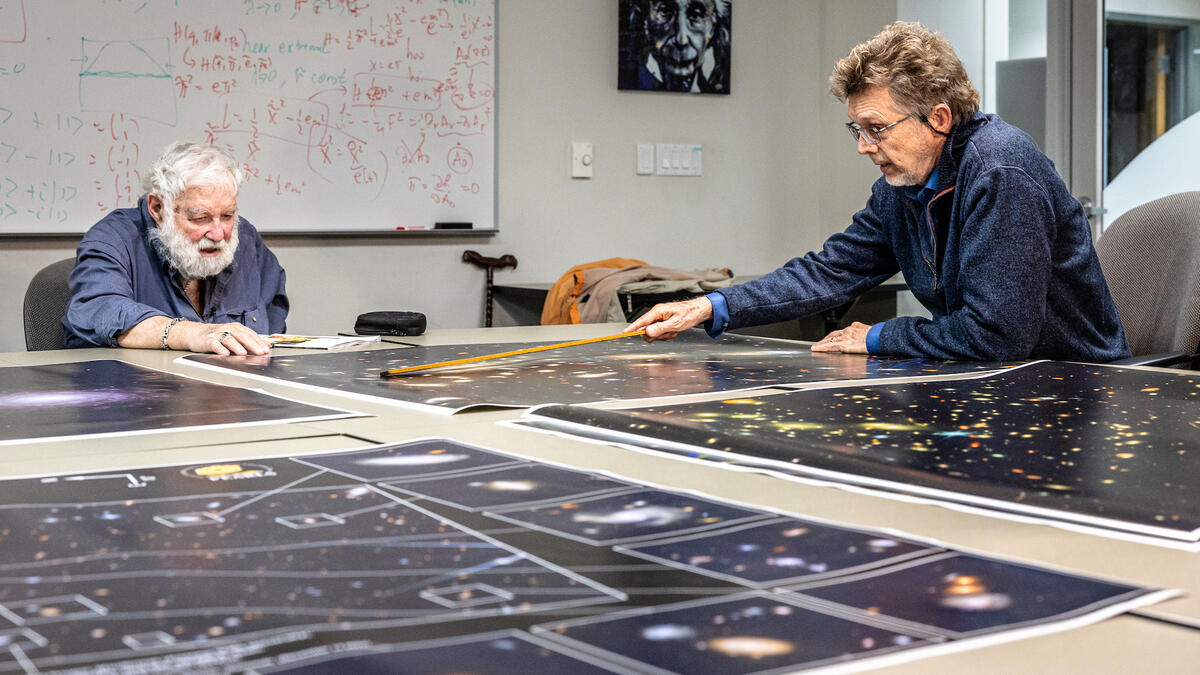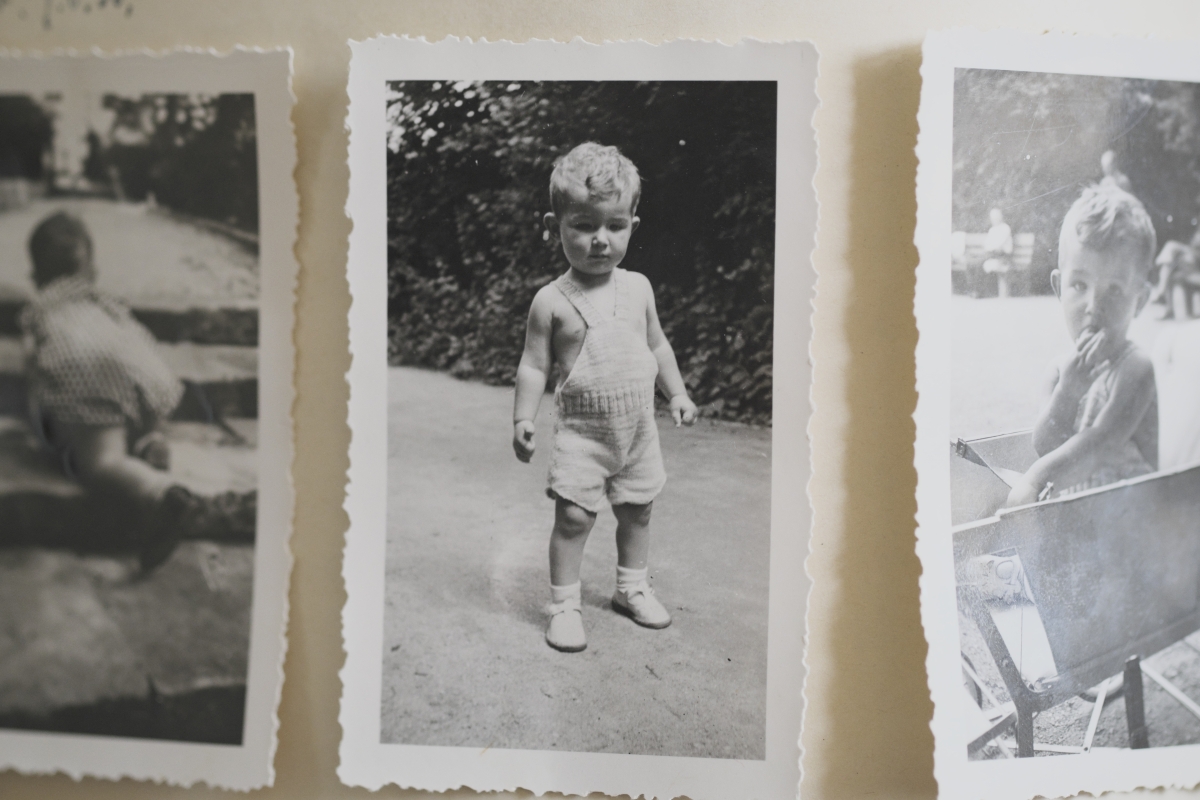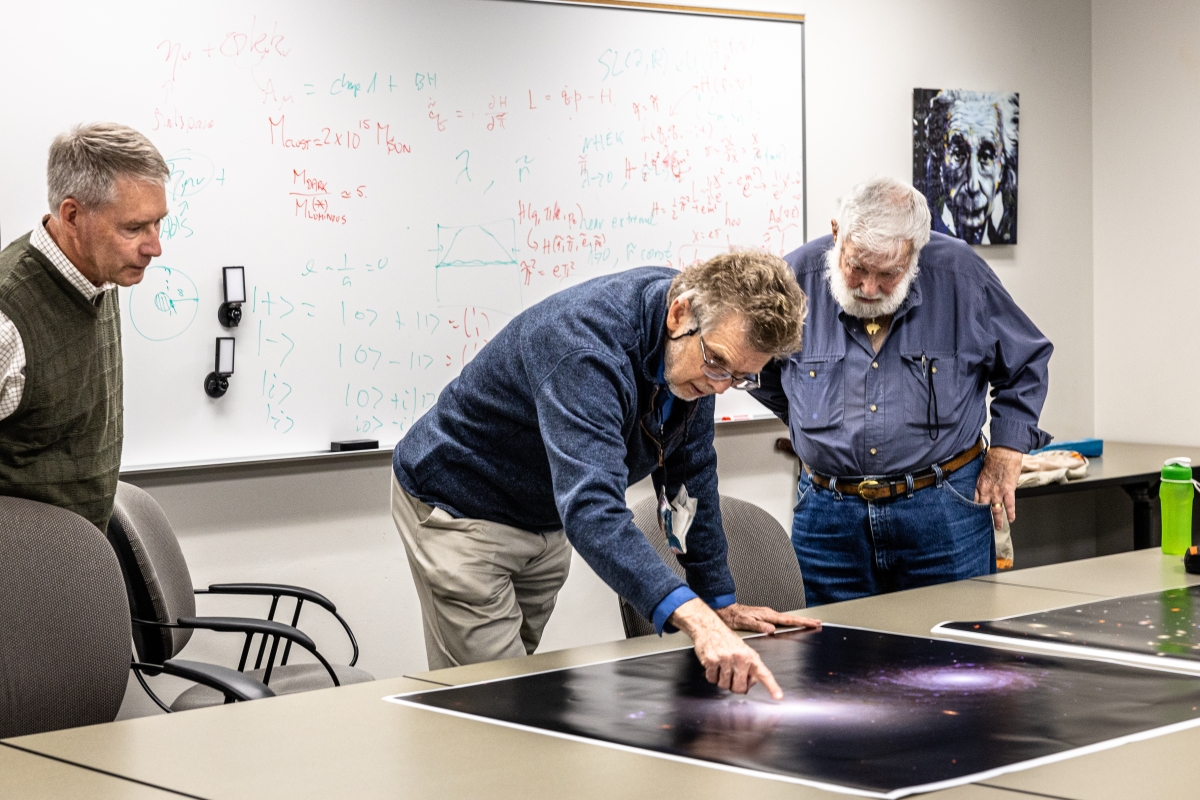Einstein connects ASU professor, Holocaust survivor

Holocaust survivor Werner Salinger (L) with Rogier Windhorst (R)
Werner Salinger is one of the few people still living who can recall talking to and being with Albert Einstein.
“He loved — just loved — being with kids. I was just a kid to him, you know?” Salinger says.
Salinger is now 92 years old. Born in Berlin, he survived the Holocaust when he and his parents fled Germany in 1939. But their escape would take the life of his mother, who contracted tuberculosis on their ship voyage to New York. A year later, he was living in Princeton, New Jersey.
Salinger’s grandmother was a friend of Frau Helen Dukas, Einstein’s secretary. When she would visit Princeton, Salinger’s grandmother would walk Werner down Mercer Street to the house where Einstein lived and worked. It was the early 1940s; World War II. Einstein himself had already fled Nazi Germany for the United States and Princeton years before the Salingers.
“He would take me by the hand and walk me through his garden,” Salinger says, “then back to his study, where he had a violin up on the wall. And he would take the violin down and play it for me.”
Salinger could not have known it then, but this was also a time when Einstein was doing important work about physics, gravity, time and relativity.
For example, work about distant gravitationally lensing clusters — where the gravitational pull of galaxies can be powerful enough to bend light shining from objects behind them.
“These would be able to magnify and curve the image of galaxies behind the cluster,” says Rogier Windhorst, a Regents Professor at Arizona State University.
Windhorst was born in 1955, the same year Einstein died. But Einstein — both the man and his ideas — are now the connection between Salinger and Windhorst. The two happened to meet recently while speaking to a high school assembly.
Salinger, who lives in Gold Canyon, Arizona, was there to speak to students about the Holocaust; Windhorst, to speak about astrophysics.
Windhorst is among the leading scientists unraveling the science behind the stunning images coming from NASA’s James Webb Space Telescope. It’s work that draws on Einstein’s ideas. So Windhorst invited Salinger to view large, new prints of some of the most impressive galaxies and clusters, including shots that show the gravitational lensing Einstein anticipated.
The strange effect can help scientists.
“Einstein predicted that these clusters would be able to magnify and curve images of galaxies behind the clusters,” Windhorst says. “Einstein got it exactly right in his prediction, but he doubted that it could ever be observed.”
Salinger, Windhorst and the rest of the world are now seeing some of what Einstein thought would never be seen, thanks to Webb.
“The way that these clusters of galaxies modify the images of the distant objects is just out of this world,” Windhorst says. “They get literally ‘spagettified’ into strings and pencils and weird-looking things.”
One of the strangest is “El Anzuelo” (the fishhook) — an image of a bright orange galaxy in the "El Gordo" galaxy cluster, pulled into a horseshoe shape by Einstein’s gravitational lensing.
MORE: Webb Telescope's gravitational lens reveals distant objects behind 'El Gordo' galaxy cluster
ASU postdoctoral researcher Patrick Kamieneski is on Windhorst’s Webb Telescope science team. He has used computational software to undo the bending and render what this galaxy looks like without the effects of gravity.
“It gets all distorted, and we have to account for that,” Kamieneski says. “But when we (unbend it), we can see the background object (in this case "El Anzuelo") at even higher resolution than Webb can give us, even on its own.”
“I call it Einstein’s fish hook,” Windhorst says.
He and the Webb Telescope team from the ASU's School of Earth and Space Exploration shared their explanations with Salinger about what is going on in the images.
“I think it’s fair to say we were showing Werner Salinger what was in Einstein’s head when he met Einstein in the 1940s, in Princeton,” Windhorst says. “Einstein never lived to see these images, but he knew his theory was right. Werner was amazed to see these pictures. Einstein never got to see it, but Werner Salinger did.”
”
More Science and technology

Breakthrough copper alloy achieves unprecedented high-temperature performance
A team of researchers from Arizona State University, the U.S. Army Research Laboratory, Lehigh University and Louisiana State University has developed a groundbreaking high-temperature copper alloy…

4 ASU researchers named senior members of the National Academy of Inventors
The National Academy of Inventors recently named four Arizona State University researchers as senior members to the prestigious organization.Professor Qiang Chen and associate professors Matthew…

Transforming Arizona’s highways for a smoother drive
Imagine you’re driving down a smooth stretch of road. Your tires have firm traction. There are no potholes you need to swerve to avoid. Your suspension feels responsive. You’re relaxed and focused on…




